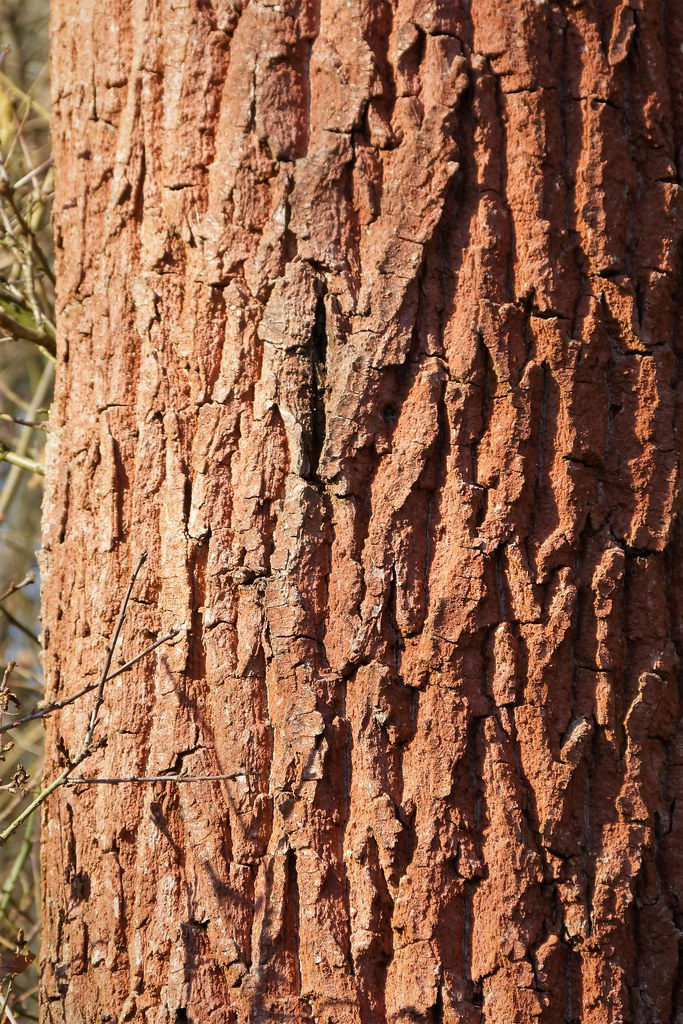by Lisa Hoyt
First noticed in Connecticut and Massachusetts ten years ago, a reddish-orange discoloration on the bark of many species of trees is now known as Red Bark Phenomenon. At Dyken Pond Center, I first noticed it on many Eastern hemlock trees a few years ago. This year, it’s very noticeable on smaller diseased American beech trees. According to the literature, it also seems to be prevalent on White pine and Red oak, has been observed on 20 tree species and is now being observed throughout New England. The orangey color is due to the presence of microscopic green algae (Chlorophyta). The cytoplasma of the cells are filled with a bright orange red pigment that masks the green cholorophyll and turns the bark of host trees the characteristic reddish orange.
It is not known at this time why there has been an expansion of Red Bark Phenomenon in New England. Theories include climate change , specifically changes in winter conditions in our region that includes trends towards winters with heavier and wetter snowfall, but less snow cover overall and higher annual precipitation.




